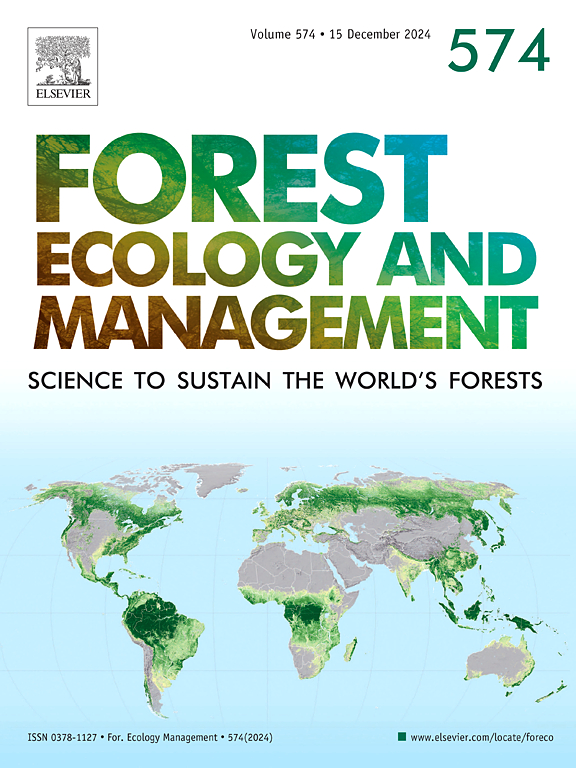Partial cutting in mixed boreonemoral forests as a restoration approach to increase insect diversity
IF 3.7
2区 农林科学
Q1 FORESTRY
引用次数: 0
Abstract
Several studies have revealed an alarming negative trend for richness and abundance of insects in European agricultural landscapes. Intensified land use is one underlying cause of insect decline, including overgrowth of wooded pastures and meadows with dense, secondary forest. Restoration cutting in mixed boreonemoral forest may be a way to restore temperate broadleaved forests with semi-open canopy, but effects on biodiversity need to be tested. We designed a Before-After Control-Impact experiment in 11 40–80 year old mixed forests on abandoned agricultural land in the boreonemoral zone of Sweden and Norway and performed restoration cutting by the removal of ca 22 % of the total volume timber (mainly spruce Picea abies but also some birch Betula spp) from 1 ha thinned plots. Our results show a significant increase in the total number of individuals and species of insects following the experimental treatment. Species richness of flower-visiting insects and Syrphidae increased significantly as a result of restoration cutting, while abundance increased for all insect groups. The treatment also had a significant positive effect on species richness of vascular plants, including number of flowering species. There was a positive relationship between the increase in plant species richness and the richness and abundance of insects. We suggest that restoration cutting by the removal of spruce in mixed recent boreonemoral forests may help ameliorate insect decline in the agricultural landscape by improving habitat conditions through increased light influx and richness of flowering plants.
求助全文
约1分钟内获得全文
求助全文
来源期刊

Forest Ecology and Management
农林科学-林学
CiteScore
7.50
自引率
10.80%
发文量
665
审稿时长
39 days
期刊介绍:
Forest Ecology and Management publishes scientific articles linking forest ecology with forest management, focusing on the application of biological, ecological and social knowledge to the management and conservation of plantations and natural forests. The scope of the journal includes all forest ecosystems of the world.
A peer-review process ensures the quality and international interest of the manuscripts accepted for publication. The journal encourages communication between scientists in disparate fields who share a common interest in ecology and forest management, bridging the gap between research workers and forest managers.
We encourage submission of papers that will have the strongest interest and value to the Journal''s international readership. Some key features of papers with strong interest include:
1. Clear connections between the ecology and management of forests;
2. Novel ideas or approaches to important challenges in forest ecology and management;
3. Studies that address a population of interest beyond the scale of single research sites, Three key points in the design of forest experiments, Forest Ecology and Management 255 (2008) 2022-2023);
4. Review Articles on timely, important topics. Authors are welcome to contact one of the editors to discuss the suitability of a potential review manuscript.
The Journal encourages proposals for special issues examining important areas of forest ecology and management. Potential guest editors should contact any of the Editors to begin discussions about topics, potential papers, and other details.
 求助内容:
求助内容: 应助结果提醒方式:
应助结果提醒方式:


